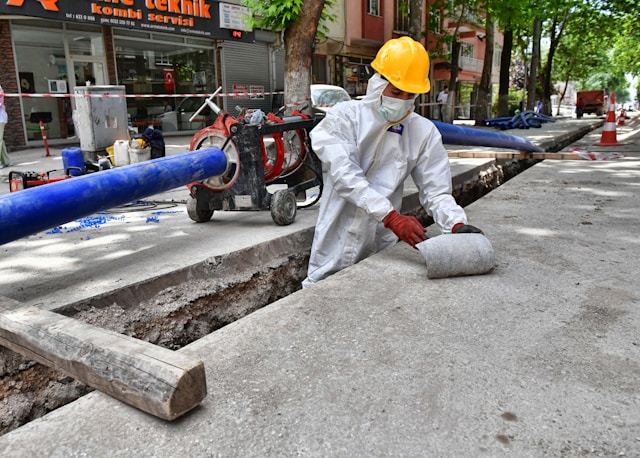Once hailed for its heat resistance and insulating properties, asbestos has now become a notorious hazard. Its fibres are linked to serious health risks like lung cancer, mesothelioma, and asbestosis. The challenge of detecting and safely removing these fibres from buildings and environments has spurred the development of innovative technologies. This article delves into some of the cutting-edge tools and methods revolutionising the field of asbestos detection and removal, essential components of an effective asbestos management plan.
Table of Contents
Enhanced Detection: From Visual Surveys to Advanced Spectroscopy
Traditionally, the detection of asbestos involved visual inspections and manual sampling, which were often invasive and posed risks of fibre release. Today, technology offers safer and more accurate alternatives. One of the breakthroughs in this arena is the use of infrared spectroscopy. This technique involves analysing the specific wavelengths of light absorbed by these fibres, providing a non-destructive method to identify materials containing asbestos accurately.
Another exciting development is hyperspectral imaging, which extends beyond the capabilities of traditional imaging methods by capturing a wider array of light frequencies. This allows for the detailed analysis of the chemical composition of materials across a large area, effectively pinpointing asbestos presence without physical contact.
Robotics in Asbestos Abatement
Asbestos removal poses significant health risks to workers, primarily through exposure to airborne fibres. Robotics technology has emerged as a game-changer in this field, significantly reducing human exposure. Robots equipped with HEPA-filter vacuum systems and custom tools can perform asbestos abatement tasks under remote control. These robots can access tight and hazardous spaces, like ducts and between walls, to safely remove asbestos-containing materials.
An innovative example is drone technology for inspecting and sampling these fibres in hard-to-reach areas such as high roofs or deteriorated structures. Drones can be outfitted with cameras and sensors to safely assess and collect samples from these risky environments.
Air Quality Monitoring Advancements
Maintaining air quality during the removal is critical to ensure safety and compliance with any asbestos management plan. Recent advancements in real-time air monitoring systems offer continuous surveillance of airborne asbestos fibres, providing instant data to workers and safety managers. These systems use laser-based light scattering sensors to detect and measure fibre concentrations, enabling immediate response if unsafe levels are detected.
Water-Based Removal Techniques
Innovative water-based removal techniques have also been developed to enhance safety in asbestos abatement. These methods involve saturating asbestos-containing materials with a liquid solution that prevents the release of fibres during removal. The solutions often contain additives that improve adherence to the fibres, effectively “locking” them in place. This method not only suppresses dust but also facilitates safer and more effective removal.
Chemical Encapsulation
Chemical encapsulation involves applying a penetrative chemical solution that binds with asbestos fibres, turning them into a non-friable mass. This technology not only prevents the release of fibres during removal but also allows for safer handling and disposal. Recent formulations of encapsulants have improved in terms of environmental safety and effectiveness, offering a viable alternative to traditional removal methods.
The Role of AI and Machine Learning
Artificial intelligence (AI) and machine learning are playing increasingly significant roles in asbestos management. AI can be used to analyse huge amounts of data from building surveys to predict and prioritise areas at risk of asbestos. Machine learning models can also enhance the capabilities of detection technologies like spectroscopy and imaging, improving their accuracy and efficiency.
Training and Simulation
Virtual reality (VR) and augmented reality (AR) technologies are being utilised for training purposes in the asbestos removal industry. These technologies provide realistic, immersive environments where workers can learn and practice asbestos abatement procedures without the risks associated with actual exposure. This not only improves the safety and efficiency of workers but also ensures that they are better prepared for real-world scenarios.
The advancements in technologies for detecting and removing asbestos are vital in the fight against asbestos-related diseases. By integrating sophisticated detection methods, robotic abatement, real-time monitoring, and safer removal techniques, the industry can protect workers and the public from the dangers of these fibrous minerals more effectively than ever before.


